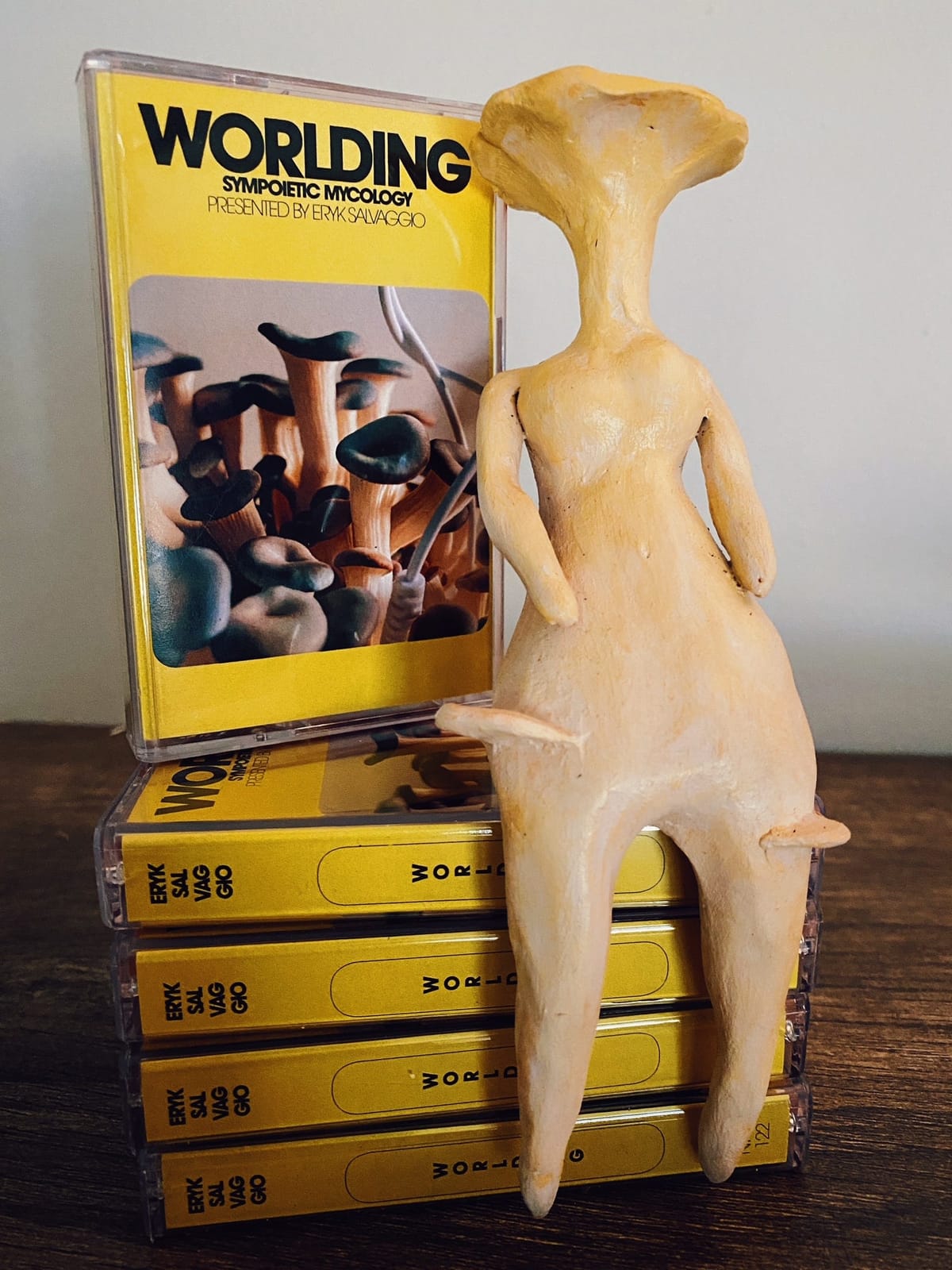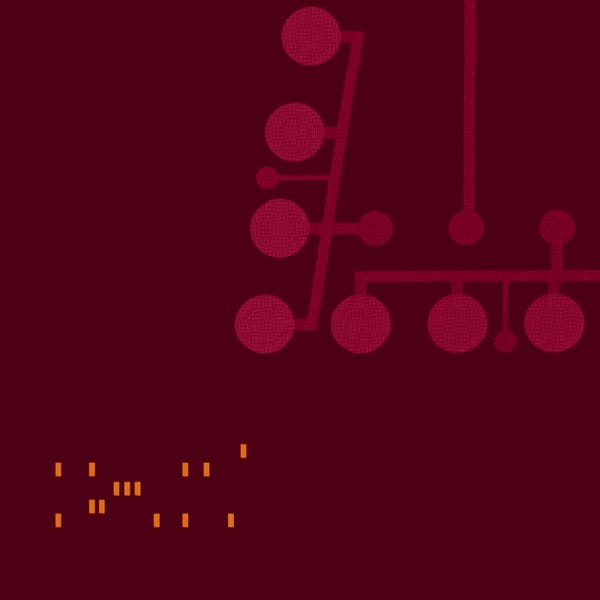Mushrooms, Recursion and You
Champignon en Abyme

This is a post about mushrooms and synthesizers and human design. It’s about how these three things interact with one another in different ways. That interaction is arranged as a platform where something else can emerge. In this case, that something else is music. But it suggests that (maybe) we could design structures for other things to emerge, too.
Worlding has been released over at Notype records. There’s a button if you want to listen to the whole thing right now.
The music was created by linking the internal communication signals from mushrooms into the circuitry of a modular analog synthesizer, extending the boundaries of the mushroom’s networked body into human communication networks and culture.
Like much of my hands-on artistic research, Worlding was a way to practice thinking through lenses of scale, of reorienting my own definitions and assumed boundaries for a particular system. There are many layers of systems present in a cybernetic mushroom synthesizer, which you are welcome to read as a systems mapping exercise or as some kind of weird poem:
An Incomplete List of Systems Within a Cybernetic Mushroom Synthesizer
- The mushroom (self-contained)
- The synthesizer (containing many components)
- The patch cable between them (distinct but in-between)
- Myself / The designer (structuring, listening, adapting, present-for)
- The structure the designer imposes on the synthesizer (designed, composed)
- The biological structure of the mushroom, which generates voltage (biologically designed)
- The connection between voltage and cables, cables and synthesizer, and speaker (what we might call “a system”)
- The system described in 7, but including myself listening and observing
- The system described in 8, but including you, listening and / or reading right now
- The system described in 7 influenced by the surrounding input of system 4 (myself, the designer) turning on lamps, spraying with mist, moving the mushroom toward windows
- The space of imagination in which myself, the mushroom, the patch cables, the lamp, the speakers co-exist and co-constitute the system
- System 11, but with myself thinking about system 11 as well as being in system 11.
- The liminal space occupied by our mental movements between each previously listed space.
- Electricity.
- Unknown
And so on, and so on, etc.
This is recursion, and recursion can make you crazy. It’s not very productive for imposing design, which requires boiling all of these levels down into a single area of focus. That constraint gives us space to work, whittling away complexity to get to the act of making stuff.
But that also forces you to cut away entire worlds. Much better to make decisions informed by the presence of all of these scales and consciously choose which scale you want to engage with for any given decision. That’s intentionality.
One of the joys of this record is that I didn’t really “make it,” so I get to tell you that I was initially very frustrated with the sounds that I was recording. I didn’t know how to listen to it. I came to understand that what I was listening to was not just a mushroom, but an resonance emerging from of the entire system. Just as there are all those layers of recursion and feedback and exchange in the design, the music contains all of these pieces, constantly in interaction, giving way to new loops and rhythms and fluctuations.
That’s the idea behind Worlding: That this was music made by “making-with” the synthesizer and mushroom and cables and myself and you.
It’s my real hope that someday you’ll sit down in a comfortable chair with a favorite beverage or, perhaps after eating something quite satisfying, and you’ll put this music on and give it a real focused listen. That is, to listen to like you’re listening to something trying to communicate that you can’t understand. And as you do, I hope you will think about all the layers of recursion that went into it.
You can even stream it now or download it in CD-quality audio files or cassette tapes.
How We Got Here
Here are some previous writings about Worlding. Each of them is me stumbling around as I switch between lenses and scales of focus, reflecting wherever I was in a given week.
- Thinking about the colonizing logics of power through abstraction evident in the foundations of mycology, and how they reflect on wider paradigms of extraction and development so entwined with science.
- How scientific and musical instruments can shape our understanding of the world in equally subjective ways.
- Some thoughts on biological electricity and the political power of directing energy.
Some other people have written about it, too.
- I’ve done an interview with the delightful Clot Magazine concerning the mushrooms and other things.
- A review from the experimental music website Obladada calls the album “an engrossing blend of mycological phone hacking and electronic processing.”
- Foxy Digitalis hosted my mixtape of mushroom-adjacent music and called Worlding “an album filled with new, interesting ideas and evolving sounds.”
I hope you will listen to the record (it’s free) but of course, it would be delightful if you purchased it, either as a collection of high-quality audio files, mastered by Stephan Mathieu (who has mastered records from Fennesz, Ian William Craig, Midori Takada and Vadislav Delay, among dozens of others).
It sounds really good!
Cybernetic Forests is a reader-supported publication. To receive new posts and support my work, consider becoming a free or paid subscriber.





